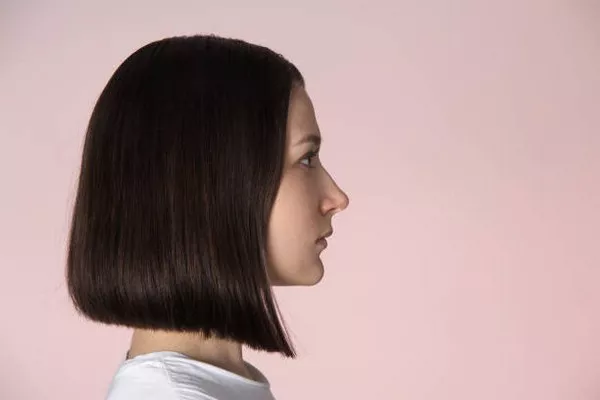In the realm of hairstyling, the A-line bob stands as a timeless and versatile choice, often sought after by individuals seeking a fresh, chic look. With its characteristic shorter back and longer front, this hairstyle has endured through the ages, adapting to trends while maintaining its classic appeal. As a hairstylist researcher, delving into the intricacies of the A-line bob unveils a rich tapestry of technique, creativity, and client satisfaction.
Understanding the A-Line Bob
The A-line bob is defined by its distinct shape, featuring a shorter length at the back that gradually increases towards the front, forming an angled silhouette reminiscent of the letter ‘A’. This design imbues the hairstyle with a sense of dynamism and movement, complementing various face shapes and hair textures.
History and Evolution
To truly grasp the significance of the A-line bob, one must delve into its historical roots. Originating in the 1920s, this hairstyle gained prominence during the era of flappers, embodying the spirit of liberation and modernity. Initially popularized by style icons such as Louise Brooks and Clara Bow, the A-line bob underwent several transformations over the decades, adapting to the evolving fashion landscape.
Technical Aspects
Creating the perfect A-line bob requires a keen understanding of hair cutting techniques and principles of balance and proportion. The process typically involves precision cutting to achieve the desired length gradient, with careful attention paid to angles and symmetry. Various tools, including shears and razors, may be utilized to tailor the hairstyle to the client’s preferences and hair type.
Suitability and Adaptability
One of the A-line bob’s greatest strengths lies in its versatility, making it suitable for a wide range of individuals. Whether someone possesses straight, wavy, or curly hair, skilled hairstylists can tailor the A-line bob to accentuate their natural features and personality. Moreover, this hairstyle transcends age barriers, appealing to both young trendsetters and mature clients seeking a sophisticated look.
Styling Options
Beyond its inherent elegance, the A-line bob offers ample opportunities for creative expression through styling. From sleek and polished to tousled and textured, the versatility of this hairstyle allows for endless experimentation. Clients can opt for subtle highlights, bold colors, or asymmetrical layers to add depth and dimension to their A-line bob, ensuring a look that is uniquely their own.
Maintenance and Care
Like any hairstyle, maintaining the integrity of an A-line bob requires diligent care and attention. Regular trims are essential to preserve its shape and prevent split ends, while quality hair care products tailored to the individual’s hair type can enhance its appearance and longevity. Additionally, incorporating heat protectants and moisturizing treatments into the styling routine helps safeguard the hair from damage and dehydration.
Celebrity Influence
As influencers and celebrities continue to shape trends in fashion and beauty, the A-line bob remains a perennial favorite among A-listers seeking a sophisticated yet edgy look. From Victoria Beckham’s iconic “Posh Spice” bob to Rihanna’s daring variations, countless celebrities have embraced the A-line bob, cementing its status as a style staple on red carpets and runways worldwide.
See Also: What Is An Asymmetrical Bob Haircut
Cultural Significance
Beyond its aesthetic appeal, the A-line bob holds cultural significance as a symbol of empowerment and self-expression. For many individuals, undergoing a dramatic hair transformation, such as adopting an A-line bob, serves as a form of personal reinvention and liberation. Whether motivated by a desire for change or a statement of individuality, the decision to embrace this hairstyle carries profound meaning for many.
Client Consultation
Central to the hairstyling process is the client consultation, wherein hairstylists collaborate with clients to understand their preferences, lifestyle, and desired outcomes. When discussing the possibility of an A-line bob, it is essential to consider factors such as face shape, hair texture, maintenance requirements, and styling versatility. By fostering open communication and mutual trust, hairstylists can ensure a positive and satisfying experience for their clients.
Conclusion
In conclusion, the A-line bob stands as a testament to the enduring allure of classic hairstyles in an ever-changing world of beauty and fashion. From its humble beginnings in the 1920s to its continued relevance in contemporary hairstyling, this iconic hairstyle exemplifies elegance, versatility, and timeless appeal. As hairstylists and researchers, our exploration of the A-line bob unveils not only its technical intricacies but also its cultural significance and transformative power in the lives of those who embrace it. By understanding the history, technique, and creative possibilities of the A-line bob, we can further enrich our craft and empower our clients to express themselves with confidence and style.


